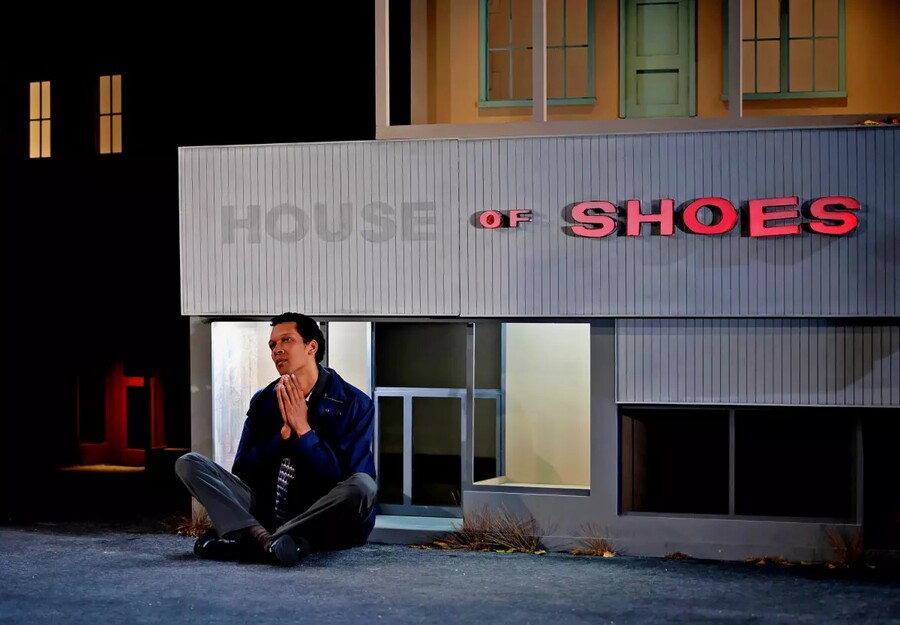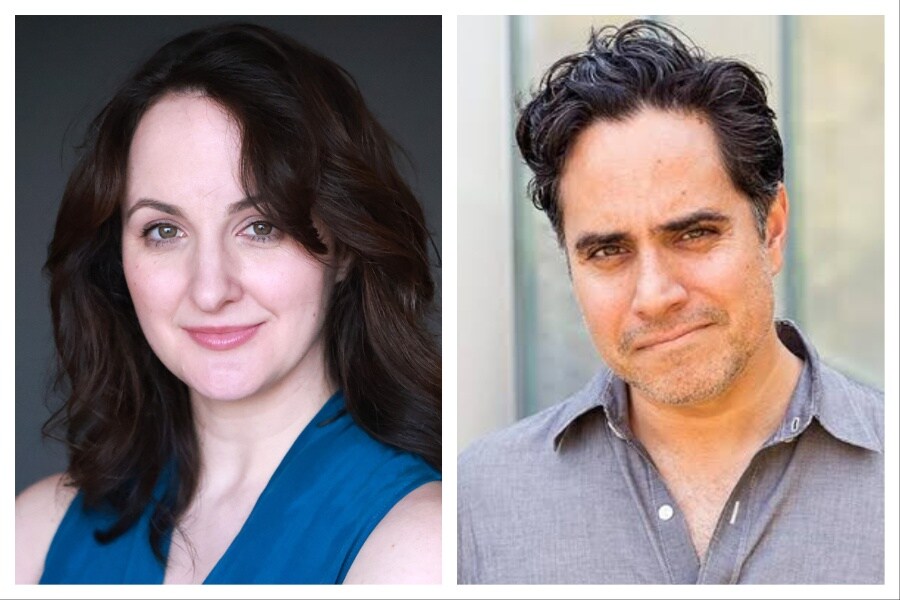No ghosts disrupt his sleep to show him the error of his ways, but Eddie—a semi-successful regional theatre actor appearing in various roles in A Christmas Carol over successive years—travels through time and, in effect, receives messages from his past self. When we meet this Juilliard-trained thespian in the first scene of Anna Ouyang Moench’s bittersweet new backstage comedy, Your Local Theater Presents: A Christmas Carol, by Charles Dickens, Again (at La Jolla Playhouse Nov. 19-Dec. 15), Eddie is floundering post-graduation and fishing for encouragement, which he gets in the form of a green room pep talk about the sacrifice and glory of the stage from the production’s seasoned Scrooge, a beloved veteran named Oliver.
By play’s end, four scenes and three decades later, Oliver has been embittered and replaced, and it is Eddie, now the show’s Scrooge, who struggles to avoid the same fate and to pass on inspiration, not more “bah humbug,” to the next generation.
The way the casting works in the play, Moench explained, is that all the actors rotate through different-aged parts except the one playing Eddie. “So he keeps talking with actors wearing his old costumes, and in a way he’s talking to them, but in another way he’s talking to himself,” she said.
Writing plays might be one way Moench talks to herself. “There was a period where I was just so burned out on theatre that it was hard to even find any pleasure in it,” she admitted. Now that she’s written a play considering “the trajectory of a career in the theatre”—a potentially terrifying prospect—she said, “I find myself just being so happy to get to do this.”
It’s also possible that a little Dickens has rubbed off on her. As director Les Waters noted, when it’s done right, A Christmas Carol is a tale of transformation.
Rob Weinert-Kendt (he/him) is the editor-in-chief of American Theatre.
More From This Issue
Support American Theatre: a just and thriving theatre ecology begins with information for all. Please join us in this mission by joining TCG, which entitles you to copies of our quarterly print magazine and helps support a long legacy of quality nonprofit arts journalism.





